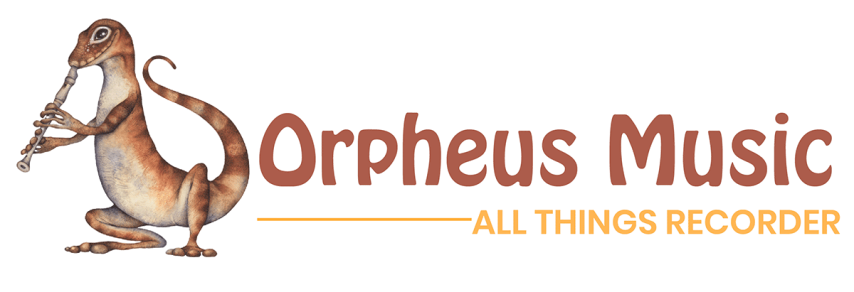No products
Prices are tax included
Pitch
Quarter-tones and micro-tones. Some modem music uses notes that fall between the 12 notes of the chromatic scale.
Notes a quarter-tone sharp can be written:
Notes a quarter-tone flat can be written:
A whole line can be flattened or sharpened by adding an arrow to the clef:
Non specific pitches. Moving trills in which the fingers trill over approximately the pitch indicated:
Burbles, created by stopping the thumb hole and sliding the palm up and down over the other holes:
Glissandi, slides between notes generated by sliding fingers on or off holes:
Another sort of short downwards glissando can be generated by slowly closing your hand around the window of the recorder:
Rhythm
Free rhythms can be notated in a number of ways.
Tailless notes can be used to indicate free rhythm within a bar:
Melodic fragments in repeat bars or boxes are repeated at will for the duration of the arrow:
Circled or boxed tailless notes are usually repeated in any order at any speed for the duration of the arrow:
Beats can be divided into any number of units. In these cases the number on top refers to the number of notes played in the time of a crotchet beat:
If there is not a regular crotchet beat composers usually specify a ratio. The following example means five notes in the time usually taken for three (i.e. in a dotted crotchet/quarter note):
Timbres and Effects
Flutter tonguing is achieved by rolling the tongue in a continuous "rrr". If you can't manage this it can be faked by gargling in the back of your throat:
Some composers specify which type of flutter tonguing they want:
Half blowing or angle blowing is achieved by blowing across the mouthpiece rather than directly in it. A soft breathy sound results:
Another notation that is sometimes used is:
If singing into the instrument is used extensively, separate staves for recorder and voice are used:
If only occasional notes are coloured with the voice the vocal part can be written on the same staff:
Multiphonics are achieved by gently overblowing a fingering until a fuzzy chord is obtained. They are notated in a number of ways.
1. Random overblowing in which the actual pitch is unimportant:
2. If the multiphonic is based on a normal fingering. The square headed note is the basic fingering, the note in brackets is the other most prominent note:
This method can be slightly modified if the fingering is very close to a normal fingering. In this case the 7th finger is added to the normal B fingering:
3. Some composers specify the two most prominent notes and give the fingering below the staff. Since all recorders vary a little you might have to fiddle with the fingering a bit to get a good sound (eg. adding a 7th finger):
Percussive effects. Bell banging: tapping the bell of the recorder with the palm of the hand is quite effective, particularly on the larger recorders:
